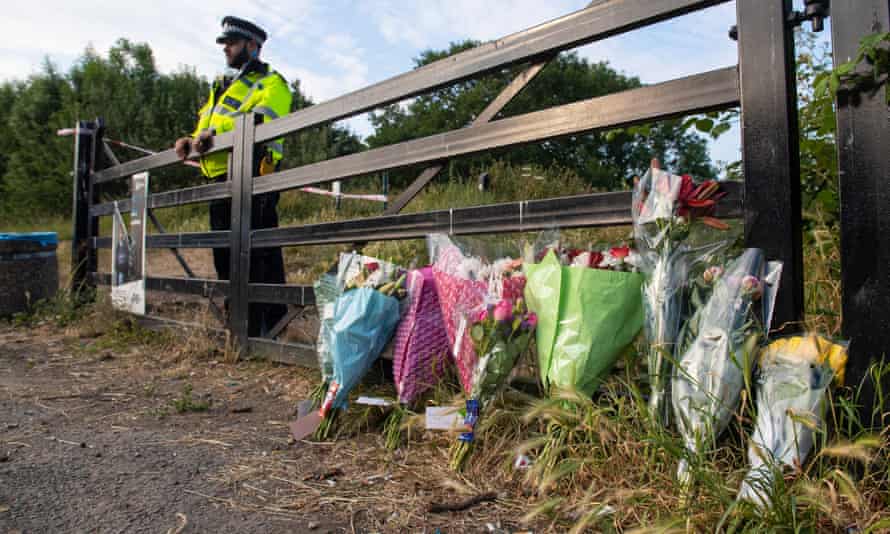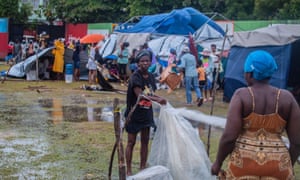Last modified on 2021 Aug 05
–
Five years ago, I began to notice that the perpetrators of some of the worst terrorist attacks had something in common. A high proportion shared a history of assaulting wives, girlfriends and other female relatives, sometimes involving a whole series of victims, long before they attacked total strangers.
In the summer of 2016, for example, when just two terrorist attacks in Florida and the south of France left 135 people dead and hundreds injured, both perpetrators claimed to be Islamists. But I was struck by the fact that each had a horrific record of domestic violence.
A year later, there were four fatal attacks in the UK and all six perpetrators turned out either to have abused women or, in one case, to have witnessed his father abusing his mother and sister. There were striking similarities between the histories of Darren Osborne, the rightwing extremist who drove a van into worshipers leaving a mosque in north London, and Khalid Masood, the Islamist who staged an attack on Westminster Bridge. Both men had criminal records for violent offenses – and both had abused women.
I thought these cases challenged conventional wisdom about terrorism, which holds that it is all about ideology. Many fatal terrorist attacks actually appeared to be an escalation of violence that had been going on, sometimes for years, against members of the perpetrator’s family. I was convinced that the police and MI5 needed to change the way they assessed the risk posed by suspects, treating a history of domestic violence as a very significant red flag.
When I raised this with the authorities, however, I encountered scepticism and disbelief. So I decided to write a book, using published sources to piece together a woeful catalogue of men who had humiliated, beaten and sexually assaulted women long before they became notorious as terrorists. It was published in 2019 and this time senior figures at counter-terrorism policing and the Home Office listened.
They commissioned groundbreaking research using data on just over 3,000 referrals to the Prevent program in England and Wales in 2019 – adults and children who had caused concern to teachers, social workers and family members because of a possible vulnerability to radicalization (V2R). The results of what came to be called Project Starlight have not yet been published, but I have been given access to them – and they are stunning.
Almost 40% of adult referrals had a history of domestic abuse either as perpetrators, witnesses or victims – or a combination of all three. This is likely to be an underestimate, given that domestic violence is one of the most under-reported crimes, but it provides some idea of prevalence for the first time. The comparable figure for children is 30%, another likely underestimate because under-16s were not routinely questioned about domestic abuse in the home.
There were many more men than women among the sample and the research showed another significant difference between the sexes: male referrals were more likely to be perpetrators of domestic abuse, while the women were more likely to be victims. But what is really shocking is the extent and seriousness of the violence disclosed in family histories. “Incidents recorded ranged from children witnessing domestic abuse in their households to people being convicted of the attempted murder of their partner.”
As I expected, the link is visible across ideologies, from Islamists and rightwing extremists to the fifth of the sample where no known ideology was identified. This confirms my theory that terrorism is at least as much about male violence as ideology, suggesting that angry young men are attracted to extremist ideas that appear to “justify” their grievances. The route from victim to perpetrator is not inevitable but it is well known, and the research reveals that almost 16% of adult V2R referrals had been victims of domestic abuse, nearly three times higher than the estimated national figure.
Take the tragic case of the Deghayes brothers from Brighton. After enduring years of violence at the hands of their father, 18-year-old Amer Deghayes fled to Syria where he joined a terrorist organization, al-Nusra Front, in 2013. Two younger brothers followed and were killed within months of their arrival. Another brother, who had remained in Brighton, was convicted of drugs offenses and stabbed to death in 2019. The cost of violence in the home is unacceptably high.
Another reason why extremist organizations appeal to aggrieved men is, I’m afraid, their misogyny. When the Project Starlight researchers looked for a link between V2R referrals and hate crime, they did not find it – but they did find one with woman-hating. Indeed so-called incels – bitter young men who blame women for their inability to get sex – have carried out fatal attacks in the US and Canada.
A recent horrific case suggests that counter-terrorism officials need to be alert to the possibility that extreme misogyny is in itself a form of radicalization. Last month a 19-year-old man was convicted of the murders of two sisters, Bibaa Henry and Nicole Smallman, in north London. At his trial, it emerged that Danyal Hussein had been referred to Prevent in 2017 after using school computers to access far-right material.
He appeared in front of a Channel panel, the statutory body that assesses the risk posed by individuals, but was discharged a few months later with no continuing concerns in relation to extremism or terrorism. Yet Hussein would later draw up a “contract” with a “demon” in which he promised to kill six women – and only women – in six months in return for winning the lottery. He refused to give detectives his passwords, so it is impossible to confirm a suspicion that he may have accessed incel sites on the web. But in a note that echoes the incel obsession with not feeling sufficiently attractive to women, he pledged to “offer some blood” in exchange for making a girl fall in love with him.
All this demands a revolution in how we think about terrorism, domestic violence and misogyny. The Project Starlight report rightly includes a raft of recommendations, calling for much wider awareness of the link between violent extremism and a history of domestic violence. “All counter-terrorism case officers should consider checking for potential links to a domestic abuse-related incident,” it says.
But this may not be straightforward when so few incidents lead to convictions. A recent report revealed that three-quarters of domestic abuse cases reported to the police in England were closed without the perpetrator being charged. Some organizations have come up with welcome innovations – Croydon in south London, for instance, has a specialist social worker sitting on Channel panels, leading to the disclosure of previously unsuspected domestic abuse in the history of V2R referrals.
But the Cinderella status of crimes against women can no longer be tolerated. The connection between private and public violence is now crystal clear – and the cost of continuing to ignore it is way too high.
–
- Joan Smith is the author of Home Grown: How Domestic Violence Turns Men Into Terrorists and co-chair of the mayor of London’s Violence Against Women and Girls board
–















